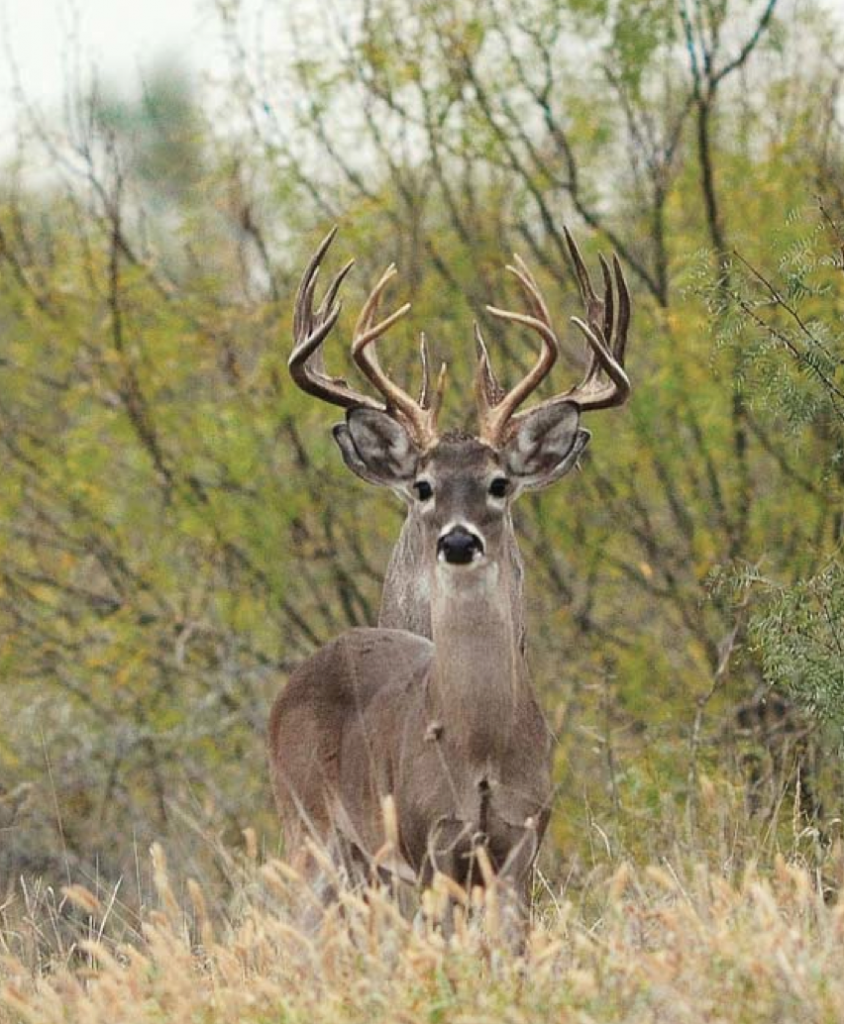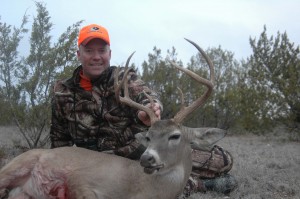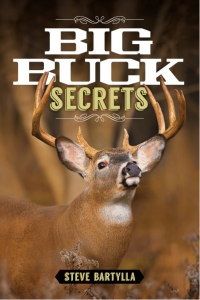
Man has always strived to be the best at what he does, and this same attitude applies to deer hunting, and more importantly, deer management. As a consequence of sportsmen’s insatiable desire to pursue larger-racked bucks and managers’ willingness to satisfy their requests, a variety of techniques have been tested to augment the size of those relished calcified appendages.
One of the most popular techniques employed is culling, which entails the harvest of bucks exhibiting less than desirable antler characteristics in order to allow those developing larger racks the opportunity to express those desirable traits through reproduction. But the question remains — is this concept effective, because it’s often employed simply as an excuse to shoot more bucks.
Based on my experience, culling has an indirect impact on overall antler quality, but not necessarily from the increased expressions of desirable genetic traits, but as a derivative of reducing a population that in most situations is excessive and extremely hard on the habitat, particularly those nutritious plants required to develop larger racks.
Increasing antler size on open land by culling is marginal at best, but it’s one method of removing additional animals, which always benefits both habitat and the inhabitants.
I have witnessed the positive effects of culling on confined herds on under 1,000 acres, but these herds are often provided a year- round supply of pelleted feed containing high amounts of crude protein, thus it’s hard to differentiate which had the greater impact on antler size, culling or the supplement.
The fact is if the correct genetic components occur in a deer herd, which they often do, all that is required is for the animal to age while benefitting from a nutritious diet on a consistent basis.

For example, on one 40,000-acre high-fenced ranch I work with, we have an estimated 2,124 deer (composed off 736 bucks, 720 does and 668 fawns). Based on as much as 50 percent of the herd could have been missed on our aerial helicopter survey, this number could possibly be doubled. More importantly, the observable density of 18.6 acres per deer is excessive, particularly when compared to the density of 33.6 acres per deer obtained in 2007 when I first surveyed the property.
But even at the present density, the number of exceptional bucks exhibiting antlers that gross score 160 inches or more is 13 times greater, with 92 trophy bucks observed in 2015 compared to only seven in 2007. Obviously, range condition in 2015 was exceptional, with much precipitation occurring during the spring and early summer when deer require it most for antler development.
But this moisture and the habitat it benefitted could not be able to compensate for the excessive population if it was not for the year-round feeding program consisting of 226 bulk feeders (one feeder per 175 acres). In other words, the carrying capacity of the land has not changed, but it has been artificially inflated by an ubiquitous feed source.
And even though a surplus of big bucks does occur, it comes with a very expensive price tag and not the removal of bucks exhibiting less than desirable headgear, particularly when only 52 bucks were removed as culls during the 2015 hunting season. The fact is if a consistently good weather pattern delivers ample rain to the brush country each spring, the abundance and quality of forage would, in my opinion, negate the requirement of culling, but drought in South Texas and northern Mexico is the norm. And it’s this inconsistency in precipitation that exacerbates the impact mushrooming deer populations have on habitat, which is reflected in below average antler size.
One method of mitigating the negative impact drought has on deer, in turn their habitat, is to manage deer populations for the very worst conditions so that when ideal climatic conditions return, an increase in both antler size and reproductive performance is more apt to occur.
The critical thing to remember is that deer must be removed, and in balanced herds bucks make up a significant part of the harvest. The decision then boils down to which bucks should be taken. Obviously, the bucks with the largest racks, at least initially, should be protected, but it’s the bucks with less than desirable antlers that are of concern, and this is where culling is subject to error.
WATCH: Advice on how to plan your hunting around the phases of the rut
The two antler characteristics concentrated on most have been unbranched antlers (spikes) of year- ling males and 8-or-less point racked deer in the mature age classes. From 1973 to 1990, Texas Parks and Wildlife researchers followed the antler characteristics of 43 spikes and 97 fork-antlered yearlings raised in 4-acre enclosures and fed a 16 percent crude protein diet.
At 4-1⁄2 years of age, the average gross Boone and Crockett score for the spike-antlered yearlings was 89 inches compared to 127 inches for the fork-antlered yearlings, while 62 percent of fork-antlered yearlings produced gross B&C scores of 120 at 4-1⁄2 years, and only 23 percent of spike-antlered yearlings had similar scores.
Based on these findings, deer hunters and managers bought into the “inferior spike principle” as the answer to trophy buck production, but superior-racked males failed to materialize, primarily because in wild deer populations, change takes generations to occur, and the technique simply did not have enough time. It is also important to understand that antler size depends on several factors other than genetics.
Rainfall amounts have the most significant impact on antler size in South Texas and other locales, because when adequate moisture occurs during the spring, the quantity and quality of native forage is elevated, and few spikes occur in that fall.
However, the reverse is true in years characterized by extended drought. Thus if a land manager is considering the removal of spike yearlings, the one question that must be answered first is whether those racks are a genetic or environmental by-product, because body growth takes precedence over antler development, and antlers of yearling males are readily impacted by environmental conditions.
Conception, in turn parturition dates, can also contribute to just how big or small those antlers develop. Fawns born early in spring entertain- ing better range conditions should develop larger yearling antlers than those born in the harsher mid- summer period.
MALES ONLY Culling in the domestic stock industry is a practice in which animals of both sexes demonstrating undesirable phenotypic (visible) traits are removed in order to enhance the expression of desirable characteristics; however, deer managers focus solely on males. The harvesting of bucks exhibiting undesirable antler qualities is their attempt to liberate males exhibiting outstanding antler traits to express those traits genetically through reproduction.

But the genetic contribution of the doe is extremely important and should not be overlooked. Accord- ing to Jacobson and Lukefahr, 2001, “Spike antlers demonstrate low heritability and that the prevalence of this trait is more likely linked to maternal and environmental influ- ences than to heritability.”
Thus it is important to realize that eliminating bucks exhibiting undesirable antler qualities is only part of the solution. It is also important to realize that there is no definitive way to address a genetically superior doe. The fact that yearling spike bucks can often develop racks at maturity that would satisfy a high percentage of hunters is another consideration.
The culling of mature bucks is based on the assumption that bucks over 4 years of age had time to realize their optimal antler size. Most hunters agree with culling older deer demonstrating less than redeeming antler qualities, but the point they often miss is that bucks exhibiting exceptional antlers must be protected.
Allowing bucks to mature is paramount to big buck production, and one of the three commandments of deer management—age, nutrition and genetics. It’s also the one sportsmen have control over. In other words, each time they squeeze the trigger, they make a management decision.
CONCLUSION Initiating a buck culling system is not difficult. The challenge is adjusting it over time so that it is beneficial to overall antler quality. For example, most would agree that a desirable buck would be one exhibiting 10 antler points or more, thus, the ones to select against would be mature, or older bucks, with fewer than 10 points.
The most generally accepted definition of an undesirable buck is that it is at least 5 years of age and exhibits 8 antler points or less. As a result, some outstanding 8-point bucks are removed when mature bucks exhibiting extremely undesirable antler qualities such as 10 short tines, no brow tines, short beams or extremely short G-2s are protected and allowed to enter the breeding hierarchy.
Culling bucks is a practice that must be continually reviewed by the hunters who make a decision each time they kill a deer. One thing’s for certain, you can’t remove all undesirable males. Even if it were possible, those inferior genetic traits would remain within the female segment of the herd.
By passing up young bucks exhibiting desirable racks, exercising an ultra-conservative harvest of trophies and removing mature bucks exhibiting undesirable antler qualities, you might very well upgrade instead of degrade your deer herd, but don’t forget — it takes time to develop big deer.
— Bob Zaiglin is a certified wildlife biologist from South Texas. He has been a D&DH contributor for more than 20 years.
+++++
Learn How to Kill Big Bucks  Solidly grounded in Bartylla’s wealth of experience, this buck hunting guide seeks to help real-world hunters take their craft to the next level. Chapters in his super book “Big Buck Secrets” include comprehensive instruction on everything from scouting new hunting areas to calling strategies, hunting during the rut, understanding mature buck behavior, aggressive and creative techniques, and more. Get your copy today!
Solidly grounded in Bartylla’s wealth of experience, this buck hunting guide seeks to help real-world hunters take their craft to the next level. Chapters in his super book “Big Buck Secrets” include comprehensive instruction on everything from scouting new hunting areas to calling strategies, hunting during the rut, understanding mature buck behavior, aggressive and creative techniques, and more. Get your copy today!








